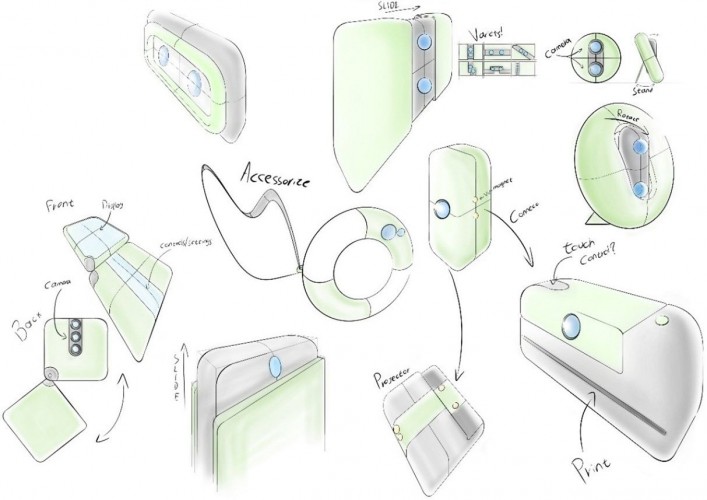Άφυλο Design: όλα είναι για όλ@
DS.WRITER:
Λήδα Μαρκάκη
Παρατηρούμε όλο και περισσότερη αποδοχή τής ρευστότητας του φύλου, σε συνδυασμό με την έννοια της αυθεντικότητας και της αυτοέκφρασης. Η αντίληψη για το δίπολο του φύλου σταδιακά αλλάζει, με όλο και περισσότερους ανθρώπους να αυτοπροσδιορίζονται σε ένα ευρύτερο φάσμα ταυτότητας φύλου, με non-binary και ουδέτερες προσεγγίσεις του φύλου να γίνονται όλο και πιο ορατές. Η ρευστότητα του φύλου είναι κάτι που συναντάμε όλο και πιο συχνά τα τελευταία χρόνια όσον αφορά την αναπαράσταση, σε συνδυασμό με την άνοδο φεμινιστικών φωνών, της ΛΟΑΤΚΙ+ κοινότητας και τρανς ακτιβιστών, που γυρίζουν την πλάτη στην κοινωνική κατασκευή που είναι το δίπολο του φύλου, εξερευνώντας νέους τρόπους απελευθέρωσης και έκφρασης. To design είναι ένας τομέας και μια βιομηχανία που προτίθεται όσο ποτέ να αναλάβει την πρόκληση της ισότητας φύλου και της συμπερίληψης της ρευστότητας φύλου, καθώς οι γενικεύσεις των δημογραφικών στατιστικών, που χρησιμοποιούνται για να χειραγωγήσουν τη συμπεριφορά των καταναλωτών, δεν αρκούν πια. Η απλή διάκριση μεταξύ ανδρών και γυναικών δεν είναι αρκετή, καθώς προχωράμε σε μια “μετα-δημογραφική” εποχή όσον αφορά τη διαφήμιση και το design.
Με την ύπαρξη πολλαπλών ταυτοτήτων φύλου, το design βρίσκεται σε μια διαδικασία εύρεσης τρόπων να απευθυνθεί σε άτομα και να τα διευκολύνει να εκφράσουν τον αυθεντικό τους εαυτό, πέραν αυτού που ίσως προσδοκά ή κατασκευάζει η κουλτούρα όπως τη γνωρίζουμε. Ένα άφυλο design προϋποθέτει την απόλυτη ελευθερία έκφρασης, ενώ η ιδέα του “ουδέτερου” δε συνδέεται με κάτι βαρετό ή μη-ενδιαφέρον. Παραδείγματα από τη βιομηχανία μόδας είναι πιο κατανοητά και, πράγματι, έχουμε συνηθίσει η μόδα να σπρώχνει τα όρια και να αποδομεί τις αντιλήψεις για το φύλο, υιοθετώντας ρευστότητα ορίων όσον αφορά τον γυναικείο και ανδρικό ρουχισμό.
Αν και η εικόνα ενός άνδρα με φόρεμα στην πασαρέλα δε μας φαίνεται -τουλάχιστον όχι στον κόσμο της μόδας- και τόσο προκλητική ή ακραία πια (αν και ακόμα προκαλεί έντονη συζήτηση, κάτι που είναι ενδεικτικό του βαθιά ριζωμένου δυαδικού διαχωρισμού), τι αντιδράσεις θα προκαλούσε η δημιουργία καταστημάτων χωρίς τον διαχωρισμό μεταξύ ανδρικών και γυναικείων ρούχων; Το Phluid Project, το πρώτο κατάστημα “χωρίς φύλο” που άνοιξε στο Μανχάταν, αποτελεί παράδειγμα χώρου που διαχωρίζει τα ρούχα βάσει στυλ και όχι φύλου, και κατ’ επέκταση διαθέτει άφυλα δοκιμαστήρια και άφυλα μανεκέν. Οι ιδιαίτερα δημοφιλείς τσάντες Telfar είναι ένα ακόμα παράδειγμα της άφυλης προσέγγισης. Εμπνευσμένες από το σχήμα μιας απλής unisex τσάντας αγορών, οι βίγκαν τσάντες τής Telfar έγιναν κατευθείαν διάσημες (όλες οι τσάντες στο online store τους είναι εξαντλημένες). Όπως αναφέρει και ο δημιουργός τους, Telfar Clemens, οι τσάντες Telfar είναι “άφυλες, δημοκρατικές και μεταμορφωτικές”, απηχώντας τη νέα απαίτηση για diversity και συμπερίληψη.
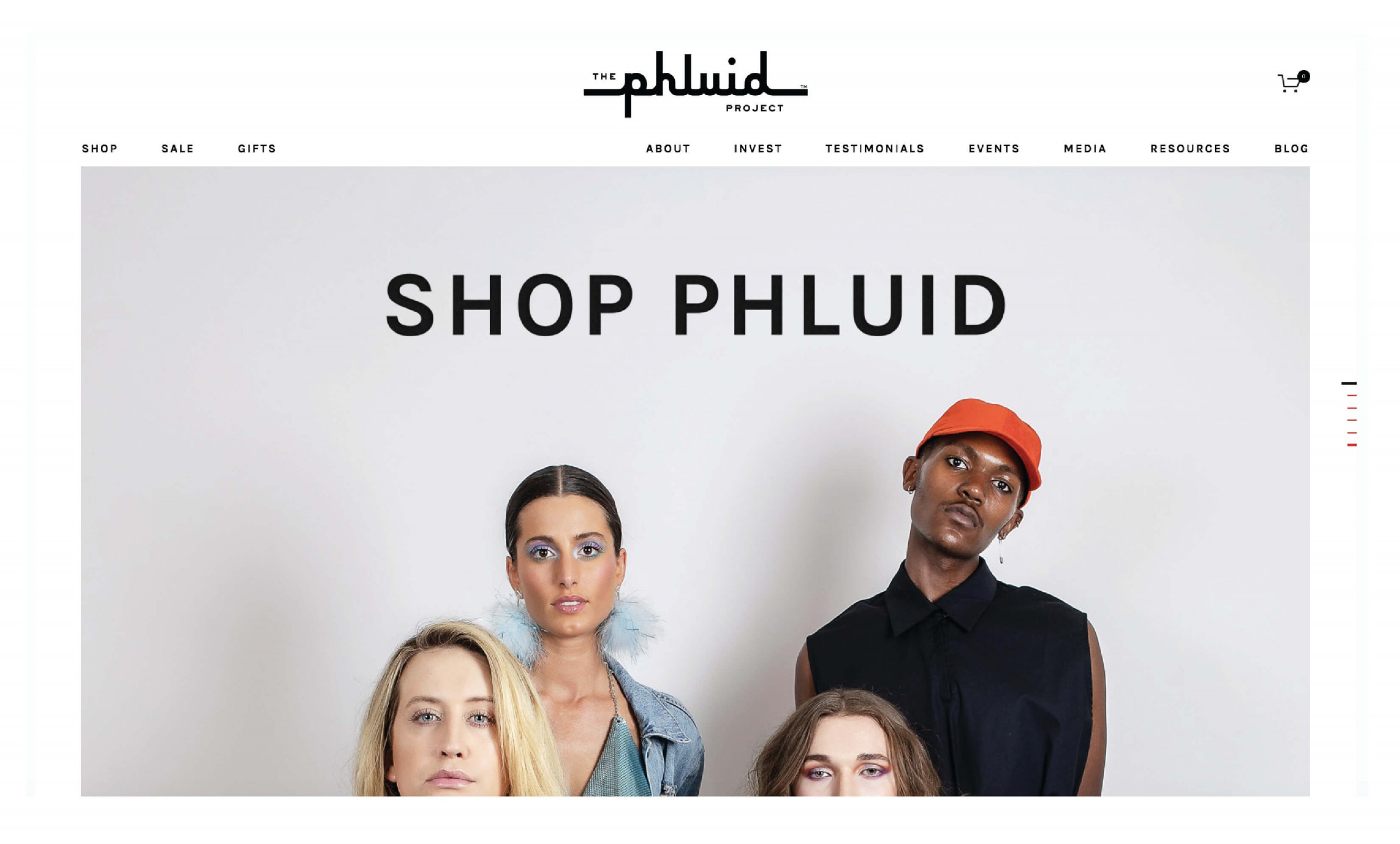
Phluid website | Πηγή: https://republic.com/the-phluid-project
Βέβαια, καθώς προχωράμε σε τομείς που προσαρμόζονται με λιγότερη ευκολία, όπως οι χώροι, τα αντικείμενα, οι συσκευασίες ή ακόμα και λογισμικά, το design πρέπει να υποστεί μια διαδικασία ολοκληρωτικού επαναπροσδιορισμού της αντίληψης. Οι δημόσιοι χώροι και το design εσωτερικών και εξωτερικών χώρων καλούνται να εναρμονιστούν με την κοινωνία τού 21ου αι., έχοντας παρασυρθεί και από το τρανς κίνημα, το οποίο, όσον αφορά τον δημόσιο χώρο, έχει ως αίτημα -ανάμεσα στα άλλα- και τις άφυλες δημόσιες τουαλέτες. Το αίτημα αυτό προωθείται από τρανς ακτιβιστές καθώς και από τους υποστηρικτές τους. Ο σχεδιασμός και οι σημάνσεις αυτών των χώρων είναι ένα καλό παράδειγμα εφαρμογής άφυλου design. Αν σκεφτούμε πως ο διαχωρισμός στις τουαλέτες αποτέλεσε έναν τρόπο να προστατευτούν οι γυναίκες από τον βιασμό, είναι περίεργο που οι κοινωνίες δεν προσπάθησαν να ξεριζώσουν την κουλτούρα του βιασμού, αλλά επέλεξαν ως λύση τον διαχωρισμό στις τουαλέτες, ώστε να προστατέψουν από -αλλά όχι να λύσουν- το πρόβλημα. Σήμερα, οι χώροι που ορίζουν οι διακρίσεις γίνονται και πάλι τόποι επιβολής δυαδικών ταυτοτήτων. Ένα καλό παράδειγμα σήμανσης αποτελεί η περίπτωση του Performance Space στη Νέα Υόρκη, όπου αναγράφεται στις τουαλέτες “EVERYBODY RESTROOMS”, προωθώντας τη συμπεριληπτικότητα με εξυπνάδα στο εφαρμοσμένο καθημερινό design. Το αρχιτεκτονικό design της άφυλης τουαλέτας είναι επίσης μια ενδιαφέρουσα περίπτωση που εξερευνά αλλαγές στο σχήμα, την κινητικότητα και τη χρηστικότητα των τουαλετών ουδέτερου φύλου.
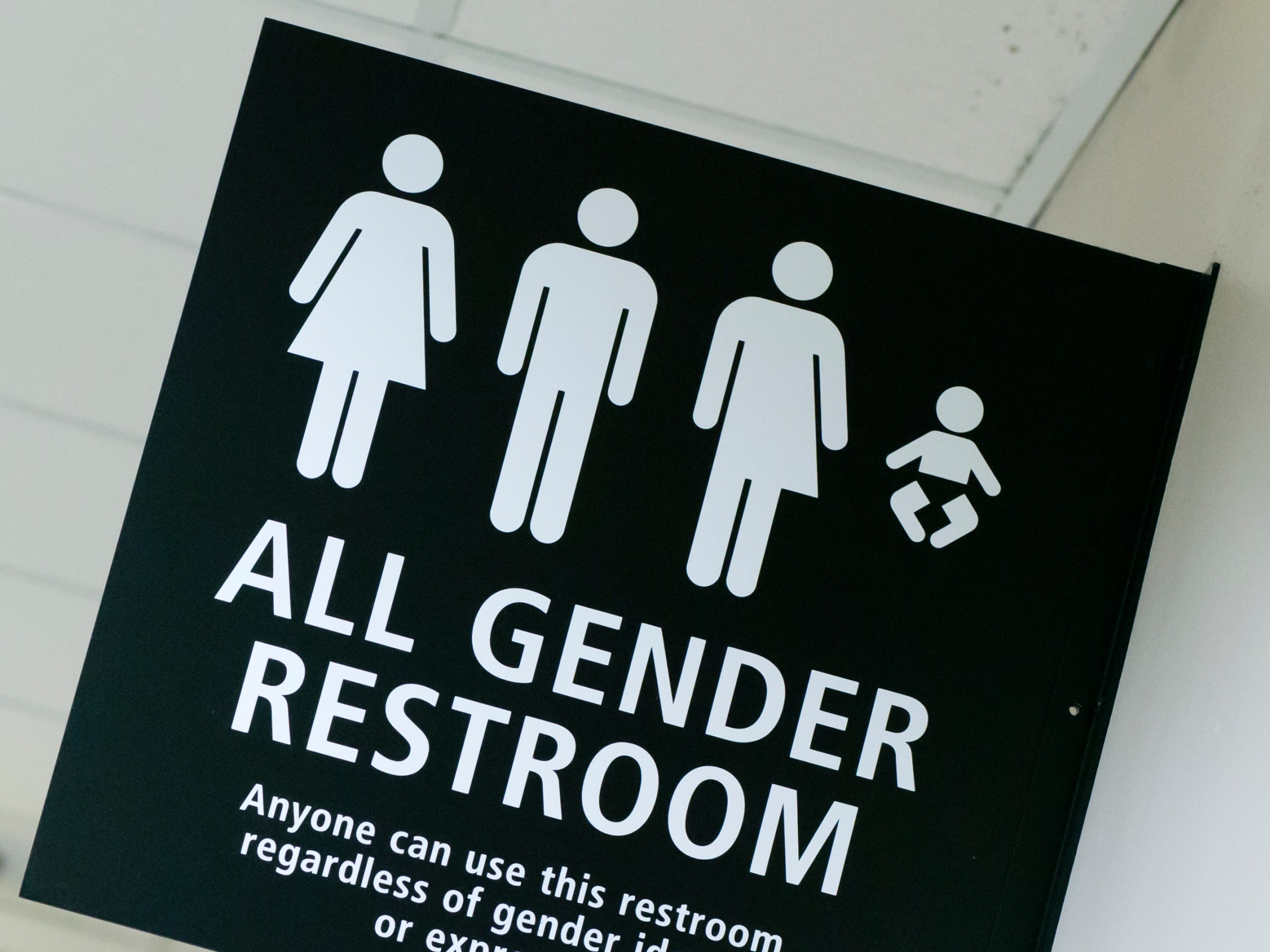
Πηγή: https://www.teenvogue.com/story/we-need-gender-neutral-bathrooms-everywhere
Ακόμα και τομείς με έντονο το στοιχείο του διαχωρισμού, όπως τα παιδικά δωμάτια και παιχνίδια, σταδιακά απομακρύνονται από την παλιά λογική του ροζ για τα κορίτσια, μπλε για τα αγόρια. Όλο και περισσότερο, οι νέοι γονείς αποφεύγουν τον κιτς ροζ/μπλε εφιάλτη, και προτιμούν να διακοσμούν το δωμάτιο των παιδιών τους με περισσότερο ουδέτερα, παστέλ και γήινα χρώματα. Τοίχοι σε γήινες αποχρώσεις, ξύλινα μινιμαλιστικά έπιπλα, μπλε παστέλ χαλιά, ακόμα και παιχνίδια όπως το Toro Play Kitchen της δανέζικης εταιρείας Ferm Living, που “προσκαλεί αγόρια και κορίτσια να εξασκήσουν τις μαγειρικές τους ικανότητες”, είναι μόνο λίγα παραδείγματα. Η πασίγνωστη εταιρεία LEGO έχει επίσης μπει στη διαδικασία αφαίρεσης στερεοτύπων για τα φύλα, μετά από μια μελέτη που έδειξε πως 71% των αγοριών φοβούνται πως θα τα κοροϊδέψουν αν παίξουν με “κοριτσίστικα” παιχνίδια. Ακόμα και η επιλογή ρούχων έχει αρχίσει και γίνεται πιο διακριτική όσον αφορά τα παιδιά. Ένα τελευταίο, αλλά σημαντικό παράδειγμα αυτής της αλλαγής, είναι η επιλογή τής τεράστιας αμερικανικής αλυσίδας Target να σταματήσει να χρησιμοποιεί το φύλο ως διαχωριστικό στους διαδρόμους με τα παιχνίδια, και αντ’ αυτού να κατηγοριοποιεί τα προϊόντα βάσει ηλικίας.
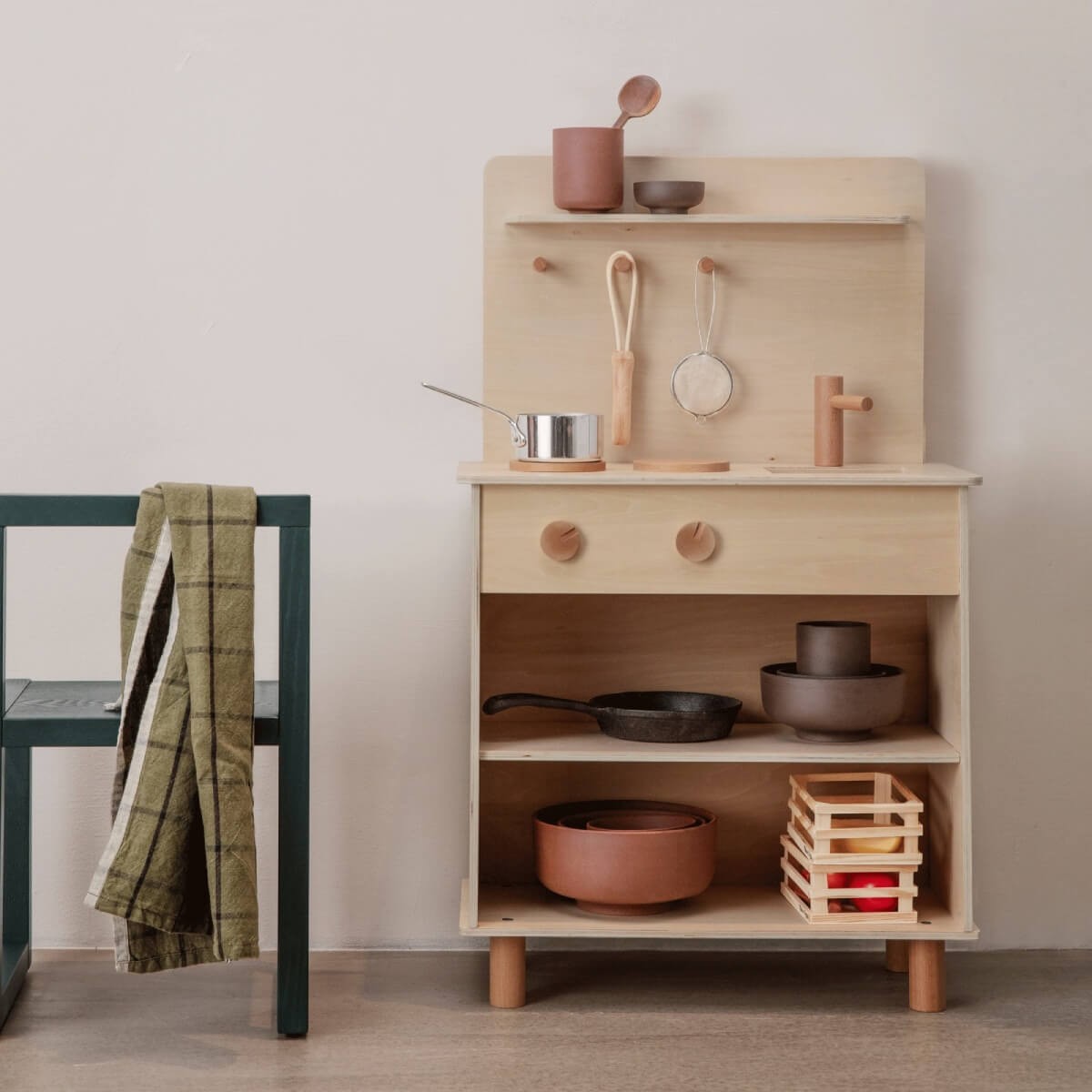
Toro Play Kitchen, Ferm Living | Πηγή:https://www.ambientedirect.com/
Επιπλέον, τομείς όπως το design συσκευασίας, το design προϊόντων ομορφιάς, τα έπιπλα, ακόμα και η τεχνολογία, παρουσιάζουν παραδείγματα άφυλου design. Επιτυχημένες μάρκες προϊόντων ομορφιάς, όπως οι Aesop και The Ordinary, κάνουν ουδέτερες επιλογές στις συσκευασίες τους, με κεχριμπαρένια μπουκάλια και απλές, μίνιμαλ, ασπρόμαυρες ετικέτες, απομακρυνόμενες από το έμφυλο design, με αποτέλεσμα μια πιο διακριτική και κλασική εμφάνιση. Αυτή δείχνει να είναι και η κατεύθυνση του design επίπλων, με επιλογές που ορίζουν μια πιο ουδέτερη αισθητική. Με έμφαση στις υφές, τα χρώματα και τις φόρμες που ξεστρατίζουν από έντονες συνδηλώσεις φύλου -παραδείγματα όπως αυτό του σχεδιαστή επίπλων Chris Liljenberg Halstrom είναι ενδεικτικά. Επιλέγοντας μια πιο προοδευτική προσέγγιση, το Gabriel Maher, designer από την Ολλανδία, με το πρωτοφανές De_sign, ένα ρούχο/καρέκλα το οποίο, καθώς το άτομο κινείται, προσαρμόζεται στην κάθε στάση, προωθεί την αλληλεπίδραση χωρίς στάσεις που υποδηλώνουν το φύλο.
Ένα από τα πιο προοδευτικά παραδείγματα προέρχεται από τον τομέα της τεχνολογίας με την άφυλη φωνή Q, αποτέλεσμα της συνεργασίας μεταξύ του δημιουργικού πρακτορείου Virtue και του Pride Copenhagen. Αυτή η φωνή ουδέτερου φύλου, μια αντιπρόταση στις τυπικά γυναικείες φωνές όπως η Alexa και η Siri, αποδεικνύει την ικανότητα απόρριψης των στερεοτύπων φύλου ακόμα και σε τεχνολογικό επίπεδο. Παρ' όλα αυτά, ένα ζήτημα που εξακολουθεί να δημιουργεί έντονη αντιπαράθεση, είναι η εφαρμογή άφυλων κανόνων στην αρχιτεκτονική και στον σχεδιασμό δημοσίων χώρων και υποδομών. Σε αυτούς τους τομείς φαίνεται να υπάρχει ακόμα αντίσταση σε πιο ριζοσπαστικές εφαρμογές.

Q genderless voice | Source: https://www.dailymail.co.uk
Σήμερα οι καταναλωτές, ειδικά με την ενίσχυση της επίγνωσης λόγω των social media, είναι πιο κριτικοί και ενδελεχείς με τις επιλογές που καλούνται να κάνουν. Η κατανάλωση που καθοδηγείται από την έννοια της αξίας, είναι μια από τις μεγαλύτερες αλλαγές όσον αφορά την καταναλωτική συμπεριφορά. Η ανάγκη για μια περισσότερο προσωπική και βαθύτερη προσέγγιση, που βασίζεται στην αξία και λαμβάνει υπόψιν τα πιστεύω, τις αξίες, τις ανησυχίες και τις κοινωνικές προσδοκίες των ατόμων που καταναλώνουν, απαιτεί μια ευρύτερη και πιο συμπεριληπτική οπτική γλώσσα. Απαιτεί την ανάπτυξη του critical και speculative design, που προτίθεται να σπρώξει τα όρια του ρόλου της εμπορικότητας, να μελετήσει την αλληλεπίδρασή μας με το design, υπό τις έννοιες του πολιτισμού, της κοινωνικότητας, ακόμα και της ηθικής.
Η Λήδα Μαρκάκη είναι ιστορικός τέχνης με πτυχίο από την Ανωτάτη Σχολή Καλών Τεχνών.
Τώρα πραγματοποιεί έρευνα στο πρόγραμμα master του Πανεπιστημίου του Άμστερνταμ “Πολιτιστική Ανάλυση”, και εργάζεται στον πολιτιστικό τομέα σε μη-κερδοσκοπικά ιδρύματα σύγχρονης τέχνης. Τα ερευνητικά της ενδιαφέροντα είναι ο διαθεματικός φεμινισμός, η κουήρ θεωρία, οι απο-αποικιοκρατικές προσεγγίσεις, o επιμελητικός ακτιβισμός (curatorial activism) και η διασταύρωση της σύγχρονης τέχνης με τον ακτιβισμό.




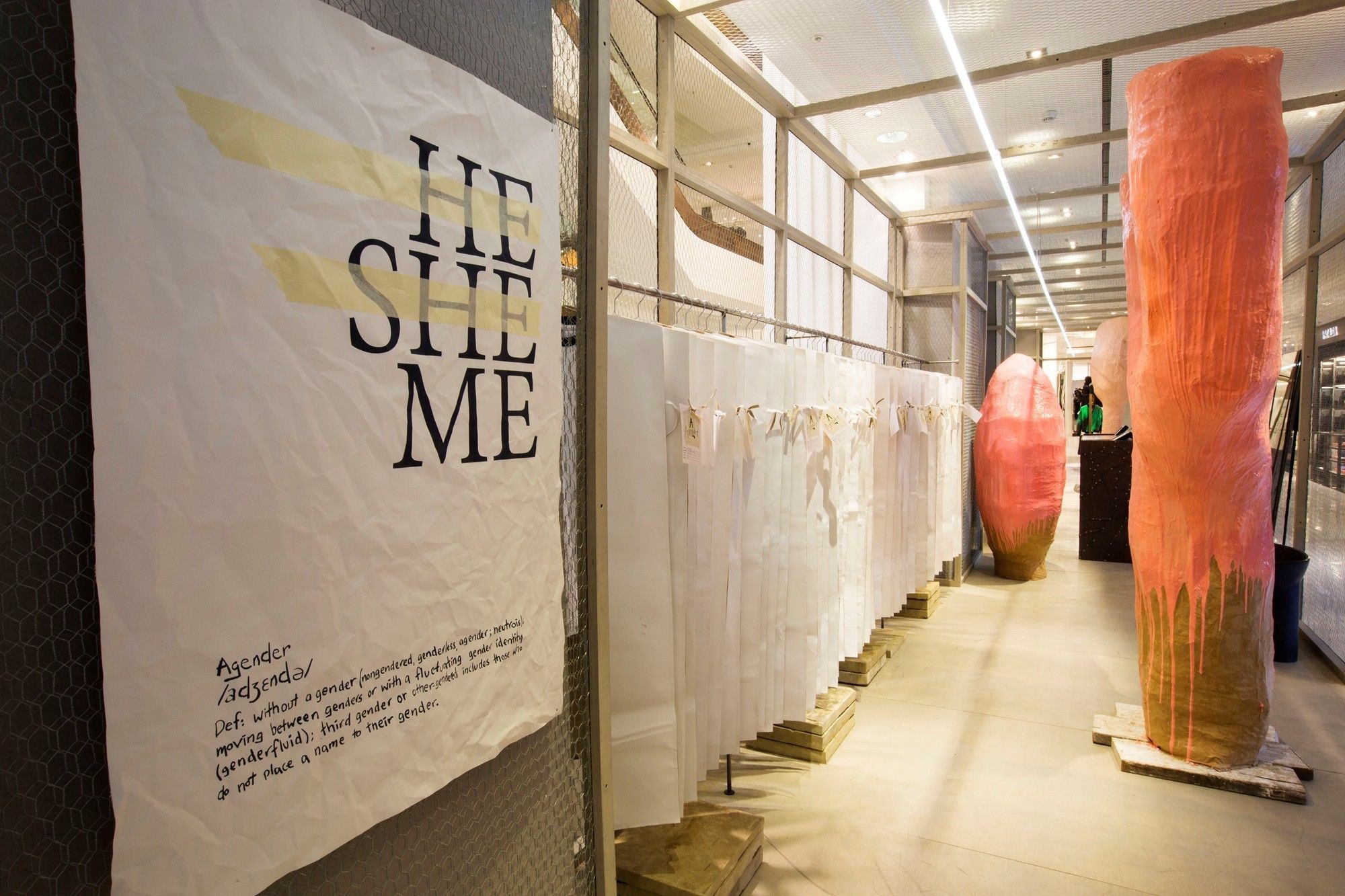
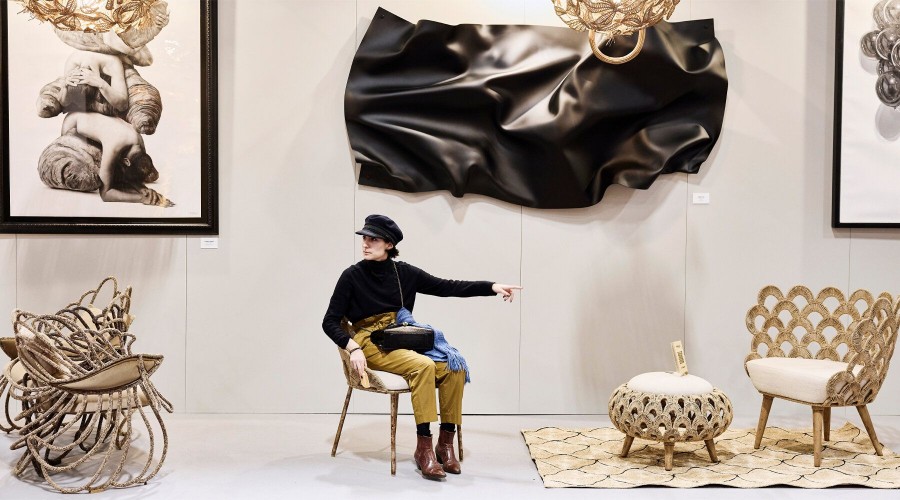

.jpeg)
